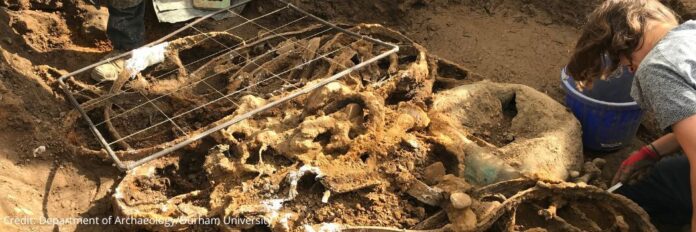Archaeologists have excavated one of the largest and most important Iron Age finds in the UK.
The find,unearthed near the village of Melsonby, North Yorkshire, includes more than 800 objects dating back around 2,000 years.
Artefacts include vehicle parts from wagons or chariots, including 28 iron tyres.
A cauldron and a bowl possibly used for wine mixing, elaborate horse harness, bridle bits and ceremonial spears were also found.

Some harness pieces are adorned with red, Mediterranean coral and coloured glass, and are larger than is typical for that time.
A large amount of the hoard was either burnt or broken, suggesting a symbolic process of people showing how wealthy and powerful they were by destroying the objects.
The objects might have been burnt on a funerary pyre before being buried, but no human remains were found.
The Melsonby Hoard is of a size that is exceptional for Britain and probably even Europe. The find could lead to a major re-evaluation of how wealth and status were expressed during the Iron Age.
It could also be important for our understanding of the nature and use of vehicles at that time.
The Melsonby Hoard was first discovered and reported in December 2021 by metal detectorist Peter Heads who was detecting in a field with the landowner’s permission.
It was excavated in 2022 by a team from Durham University’s Department of Archaeology and our professional Archaeological Services team.
Excavation also benefited from advice from The British Museum and over £120,000 in grant funding from Historic England.
The objects have been kept at Durham University for stabilisation and recording during the legal treasure case process which has now ended.
The Yorkshire Museum will be launching a fundraising campaign to secure the Melsonby Hoard for the nation.







